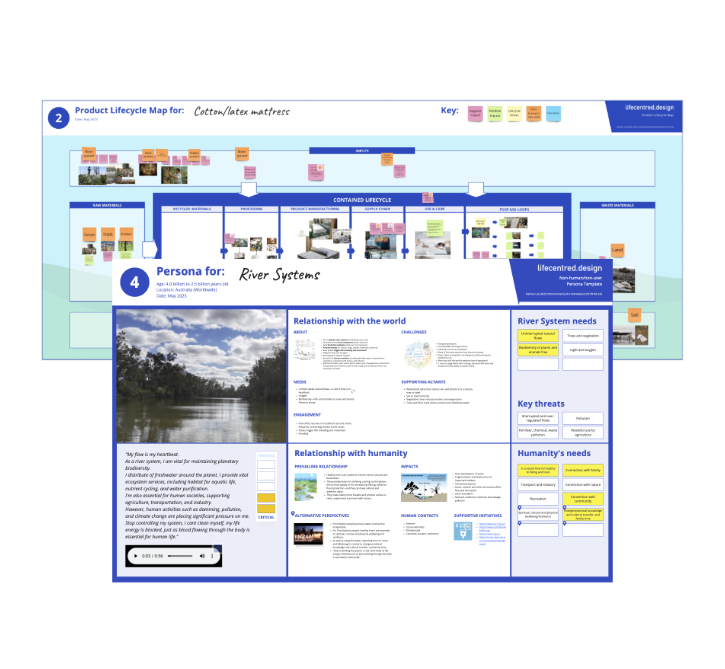
The Non-human Persona Guide
How to create and use personas for nature and invisible humans to respect their needs during design
#1 New Release Industrial Product Design, Amazon.com
Designing for more than human needs
For decades, designers and businesses have created personas for their target audience—fictional character documents, based on interviews and research, that summarise customers with similar needs.
Non-human and non-user personas enable designers to also respect the needs of the environments, animals, and invisible humans who are impacted by product lifecycles and business ecosystems.



Applying non-human/non-user personas during design not only reduces the negative impacts caused to them but also inspires ways for products and businesses to regenerate them.
However, these tools are new, and therefore their use is low and best practices are still evolving.
The Non-human Persona Guide synthesises learnings from designers from around the world into methods for identifying, creating, and working with non-human/non-user personas to expand human-centred design to design for more than human needs.



Learn how to:
- Identify the animals, environments, and invisible humans impacted by your product, service, or business
- Create their personas, and use them in design and decision-making
- Transform into a kinder and more regenerative business
Become a caretaker for trees
You can become a responsible consumer by stewarding the natural resources of this book.
Maintain and repair—See wikihow.com/Repair-a-Paperback-Book for ways to:
- Clean the book
- Repair loose and torn pages
- Reattach a cover
- Fix the binding
- Use an environmentally friendly craft glue
Give the book a second life—Dont throw out old books, pass the book on to someone who can use it:
- A friend
- A school
- Drop it in at a local library
- Pop it in a street library box
Recycle—If you can’t give the book away, give the paper a second life by recycling, so check your local rules to make sure you can drop it in the paper recycling bin.
Regenerate—Help give back to the trees cut down by donating to onetreeplanted.org.
lifecentred.design collaborates with futurescouting.com.au to donate a portion of book sales, too!
lifecentred.design respects the trees cut down to make the books
So we made a persona for them to generate ideas on how to reduce our harm and regenerate them.
- Utilising print-on-demand to reduce the use of trees and waste
- Donating to onetreeplanted.org
- Providing guidance to consumers on how to be prosumers by caretaking for the resources of their books










